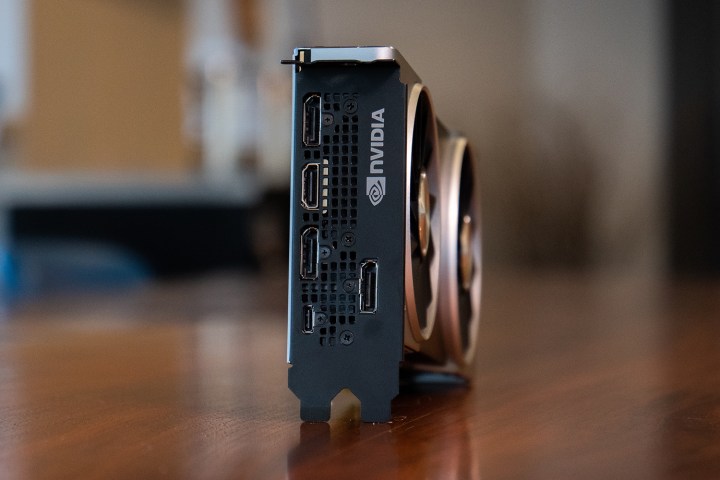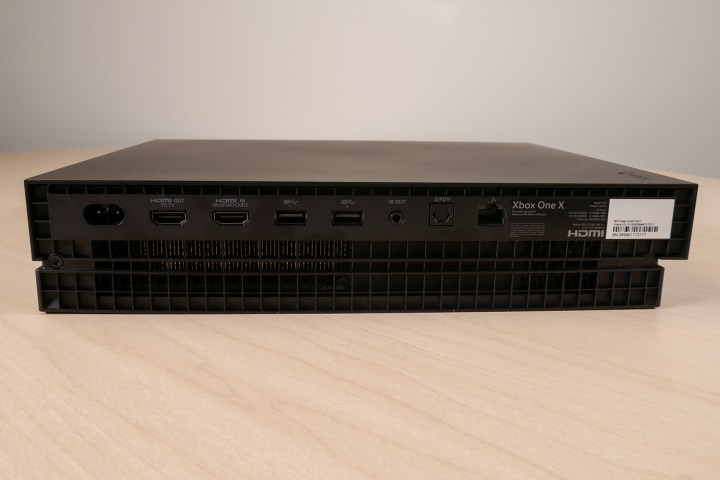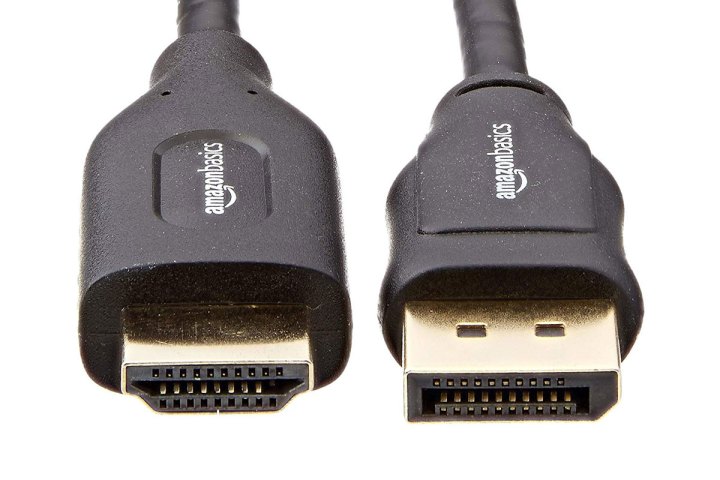
DisplayPort and HDMI are two of the most popular port and cable types for connecting all sorts of visual devices together. TVs connect to games consoles, monitors to graphics cards, and external displays to laptops, all thanks to this pair of handy connectors.
Both ports seem to have the same function on the surface, which might make you wonder what the difference is. As usual with port technology, there’s more going on here than you might think.
Where are HDMI and DisplayPort connectors?

Although both HDMI and DisplayPort connectors are common options, they aren’t found in the same sort of numbers or always in the same place. HDMI is by far the more mainstream technology. It helped launch the Blu-ray and HD-DVD industries in the mid-2000s and today can be found on almost everything you’d connect to a TV, including the TV itself.
Almost all mainstream TVs released in the last decade sport a handful of HDMI connections too. The port is such a popular choice of connector for all sorts of media devices in-fact, that there is a booming business in HDMI splitters and HDMI switches which increase the number of available HDMI ports on your TV.
It’s also the main choice of connection for gaming consoles from the Xbox One to the PlayStation 4, and most desktop computers have at least one of them too. Laptops with a gamer or productivity focus, such as the Dell G3 Gaming or Dell XPS 15, also quite commonly sport HDMI outputs to connect up to a larger display.
So, how about DisplayPort? Well, it’s is still a popular connection choice, but the port itself tends to be used exclusively on PC gaming-focused devices and screens. Most modern-day add-in graphics cards sport at least one DisplayPort connector. On high-end graphics cards like Nvidia’s RTX 2000-series or AMD’s RX 5700-series you’ll find multiples of them. It’s less common in TVs, but some new large-format gaming screens like the HP Omen X Emperium have one.
It’s not quite that simple though. The technology behind DisplayPort, is being adapted in a couple more places too. You have the mini-DisplayPort, which can be found in some midrange monitors and laptops such as the Razer Blade or Surface Laptop 2. You’ll also find it hidden in laptops with USB-C that support the powerful Thunderbolt 3 standard. It’s a way to get all that display power into a connector as tiny as USB-C.
Capabilities and features

Both HDMI and DisplayPort offer audio and video over a singular data cable making them simple and versatile connection options for most forms of media, whether you’re looking at a TV or a monitor. However, depending on the version of each that you’re using and your particular desires for image quality or framerate, you may want to opt for one over the other.
There have been many versions of HDMI since its inception in 2002, but it’s most commonly found today in version 1.4 and 2.0. Both standards can deliver 4K video to a display, but HDMI 1.4 is limited to just 30Hz, meaning it can only display 30 frames per second without leaving artifacts in the picture. That’s perfectly fine for watching movies or casual gaming, but most gamers will probably desire a smoother experience. HDMI 2.0 can handle 4K at 60Hz, without difficulty.
The reason HDMI is capped in this manner is because of its data rate. It isn’t wide enough to support higher frame rates at higher resolutions. That’s where DisplayPort takes the lead. Its most recent incarnations, 1.3 and 1.4, both have data rates that near double that of HDMI 2.0, giving it native support for 4K at 120Hz. With some compression, it can even handle that at up to 240Hz, although that’s not its ideal use. Those latest iterations of DisplayPort can even handle 8K resolution, but are mostly limited to 30Hz.
Outside of video streams, HDMI also supports Ethernet up to 100Mbit per second and an audio return channel (ARC) which makes it possible to send audio back to your speaker set up without an additional audio cable. DisplayPort offers neither of those technologies. HDMI also tends to work well over longer distances, where DisplayPort’s resolution options decline once you get over 10 feet.
One advantage DisplayPort does have, though, is its adoption by Intel’s Thunderbolt 3 standard, as mentioned earlier. This puts it in more and more devices, including thin-and-light laptops, picking up DisplayPort 1.2 technical capabilities like 4K resolution up to 75Hz. The first and second generations of Thunderbolt used the mini-DisplayPort connector. Nowadays, it’s most commonly found in the form of the USB-C port type.
The future of these ports

Both HDMI and DisplayPort technologies have improved dramatically in recent years and that shows no sign of stopping. HDMI 2.1 was officially announced in January 2017 and promises to nearly triple the data rate and bandwidth of HDMI 2.0, almost doubling the capabilities of DisplayPort 1.4. That will make 4K resolution up to 144Hz more than possible, as well as 8K resolution at up to 60Hz (with some caveats). HDMI 2.1 will also introduce support for other visual enhancements like dynamic HDR for richer colors, variable refresh rates for smoother gaming, a reduced latency for gaming, faster source media switching, and enhanced audio.
HDMI 2.1 devices will be backward compatible with older HDMI standards, meaning you can connect HDMI 1.0 through 2.0 devices to the 2.1 port on your new 8K TV. You will still need new HDMI 2.1 cables to take full advantage of any HDMI 2.1 devices you wish to attach to it though. We’re just now seeing the first televisions with HDMI 2.1 ports released.
Meanwhile, DisplayPort is pushing forward as well. VESA, the technical standards organization behind many display standards, announced in early 2018 that the next version of DisplayPort was being developed. While specifications have yet to be released, VESA claimed it was targeting a doubling of DisplayPort 1.4 bandwidth which would enable compression-free 8K video at 60Hz without difficulty.
In more immediate times, DisplayPort remains a key feature of Intel’s Thunderbolt 3, which is itself set to become more widely adopted thanks to the future integration of that technology with USB4. Although Thunderbolt 3 only supports DisplayPort 1.2, that is more than enough for 4K resolution at up to 75Hz without compression, meaning devices like Apple’s MacBook Pro can take full advantage.
DisplayPort is also supported over the USB-C standard known as VirtualLink with an estimated bandwidth equivalent to that of DisplayPort 1.4. Supported by Nvidia, AMD, HTC, Oculus VR, and Valve, the standard is designed to offer future virtual reality headsets a one-cable connection to a gaming PC for power and data delivery. Nvidia’s Founders Edition RTX 2000-series graphics cards ship out with the port on their rear panel, though no virtual reality headsets have that port option at this time. Valve may have heralded its death too, with news that it canceled an adapter for its Index headset that would have supported it.
As of late 2019, Virtualink has an uncertain future.



